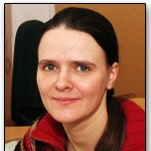Synthesis and Characterization of Biomedical Materials
A special issue of Processes (ISSN 2227-9717). This special issue belongs to the section "Materials Processes".
Deadline for manuscript submissions: closed (31 March 2021) | Viewed by 83534
Special Issue Editors
Interests: materials engineering; nanotechnology; biomaterials; medical; dental; manufacturing and surface engineering; machine building and automation; management and organization
Special Issues, Collections and Topics in MDPI journals
Interests: materials; surface and mechanical engineering; nanotechnology; biomaterials; management and organization
Special Issues, Collections and Topics in MDPI journals
Interests: dental and materials engineering; nanotechnology; biomaterials; medical, manufacturing and surface engineering; computer-aided engineering; medical electronics
Special Issues, Collections and Topics in MDPI journals
Interests: dentistry; endodontics; dental implantology; dental prosthetics; dental imaging
Special Issues, Collections and Topics in MDPI journals
Special Issue Information
Dear Colleagues,
Modern medicine takes advantage of the progress not only of basic science but also of engineering and physical and chemical sciences. One of the best examples of such combination of competencies is biomaterials. A biomaterial is a substance that has been designed to interact with biological systems for therapeutic purposes. Biomaterials are employed in various medical fields, especially in regenerative medicine, for treatment, replenishment, repair, or replacement of body tissues, to improve or restore tissue functions, and for diagnostic purposes. Therefore, biomaterials used in contact with living tissues, organisms, or microorganisms, have to take into consideration various issues, related not only to medicine but also to biology, chemistry, tissue engineering, and material engineering. Biomaterials can come from nature or be synthesized in the laboratory with a variety of approaches that use metals, polymers, ceramic, or composite materials. They are often used or adapted for medical applications and thus include all or part of a living biomedical structure or device that performs, enhances, or replaces a natural function. Such functions may be relatively passive, as in the case of a heart valve, or bioactive and more interactive, as in the case of hip implants coated with hydroxyapatite. Biomaterials are also commonly used in dental applications, surgery, and drug delivery, e.g., in the form of pharmaceutical products placed in the body to release a drug over a long period of time. Biomaterials can be autografts, allografts, or xenografts used as transplant materials. Biomaterials are used, among other applications, for joint replacement, bone plates, bone cement, surgical sutures, clips and staples to close wounds, pins and screws to stabilize fractures, surgical mesh, breast implants, artificial ligaments and tendons, dental implants for teeth stabilization, blood vessels prostheses, heart valves, vascular grafts, stents, nerve conduits, skin repair devices, intraocular lenses in eye surgery, contact lenses, drug delivery systems. Biomaterials must be compatible with the body, and problems with biocompatibility must be resolved before a product can be used in a clinical setting. For this reason, biomaterials are usually subjected to many tests, and the technologies for their assessment must be certified.
The production and synthesis of biomaterials now require the use of various technologies and methods. Often, these are methods that produce a suitable material, which is then processed using advanced material-processing technologies to obtain a specific prosthetics or another type of implant. Often, however, it is necessary to create directly a specific product with individualized geometric features and properties adapted to the requirements of a particular patient. In the case of diagnostic materials as well as of long-term drug-releasing systems, it is necessary to use special technologies.
This Special Issue on the "Synthesis and Characterization of Biomedical Materials" aims to inventory the latest achievements in the development and production of modern biomaterials that are used in modern medicine and dentistry, for instance, in cases where, as a result of traffic or sports accidents, ageing, resection of organs following cancer surgery or dangerous inflammation, there is a need to substitute lost organs, tissues, and parts of the human body. This Special Issue welcomes papers concerning the design of biomaterials and related technologies, including CAD/CAM methods, and research on their structure and properties, including biological tests characterizing the reactions of the human body to implanting or introducing different types of the biomaterials.
Prof. Dr. Leszek Adam Dobrzański
Prof. Dr. Anna D. Dobrzańska-Danikiewicz
Dr. Lech Bolesław Dobrzański
Dr. Joanna Dobrzańska
Guest Editors
Manuscript Submission Information
Manuscripts should be submitted online at www.mdpi.com by registering and logging in to this website. Once you are registered, click here to go to the submission form. Manuscripts can be submitted until the deadline. All submissions that pass pre-check are peer-reviewed. Accepted papers will be published continuously in the journal (as soon as accepted) and will be listed together on the special issue website. Research articles, review articles as well as short communications are invited. For planned papers, a title and short abstract (about 100 words) can be sent to the Editorial Office for announcement on this website.
Submitted manuscripts should not have been published previously, nor be under consideration for publication elsewhere (except conference proceedings papers). All manuscripts are thoroughly refereed through a single-blind peer-review process. A guide for authors and other relevant information for submission of manuscripts is available on the Instructions for Authors page. Processes is an international peer-reviewed open access monthly journal published by MDPI.
Please visit the Instructions for Authors page before submitting a manuscript. The Article Processing Charge (APC) for publication in this open access journal is 2400 CHF (Swiss Francs). Submitted papers should be well formatted and use good English. Authors may use MDPI's English editing service prior to publication or during author revisions.
Keywords
- Biomaterials
- Technology
- Medicine
- Dentistry
- Structure
- Properties
Benefits of Publishing in a Special Issue
- Ease of navigation: Grouping papers by topic helps scholars navigate broad scope journals more efficiently.
- Greater discoverability: Special Issues support the reach and impact of scientific research. Articles in Special Issues are more discoverable and cited more frequently.
- Expansion of research network: Special Issues facilitate connections among authors, fostering scientific collaborations.
- External promotion: Articles in Special Issues are often promoted through the journal's social media, increasing their visibility.
- e-Book format: Special Issues with more than 10 articles can be published as dedicated e-books, ensuring wide and rapid dissemination.
Further information on MDPI's Special Issue polices can be found here.









